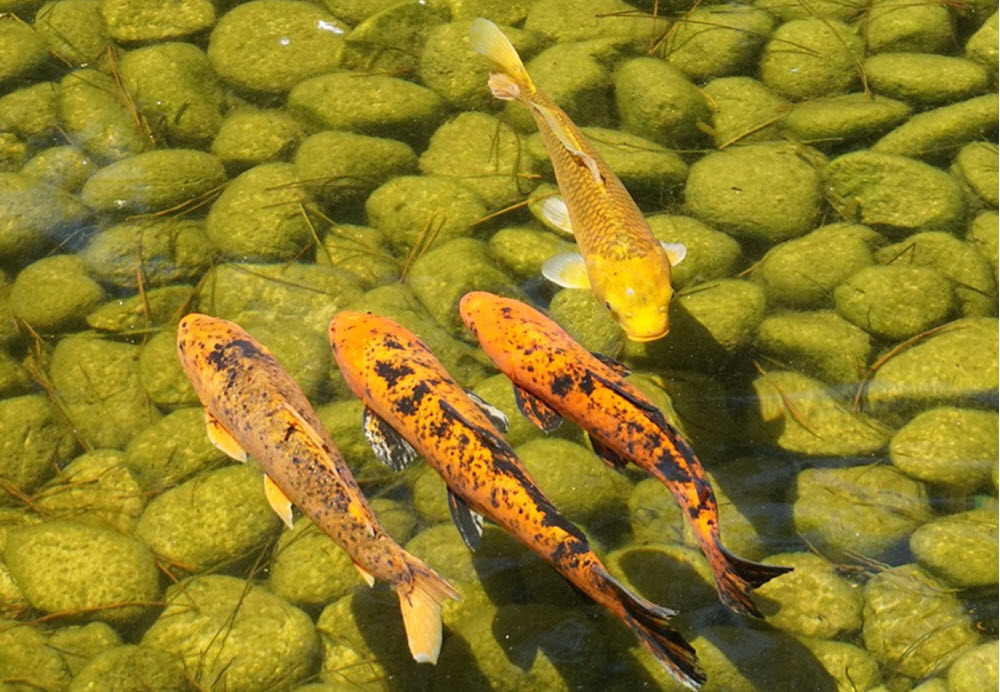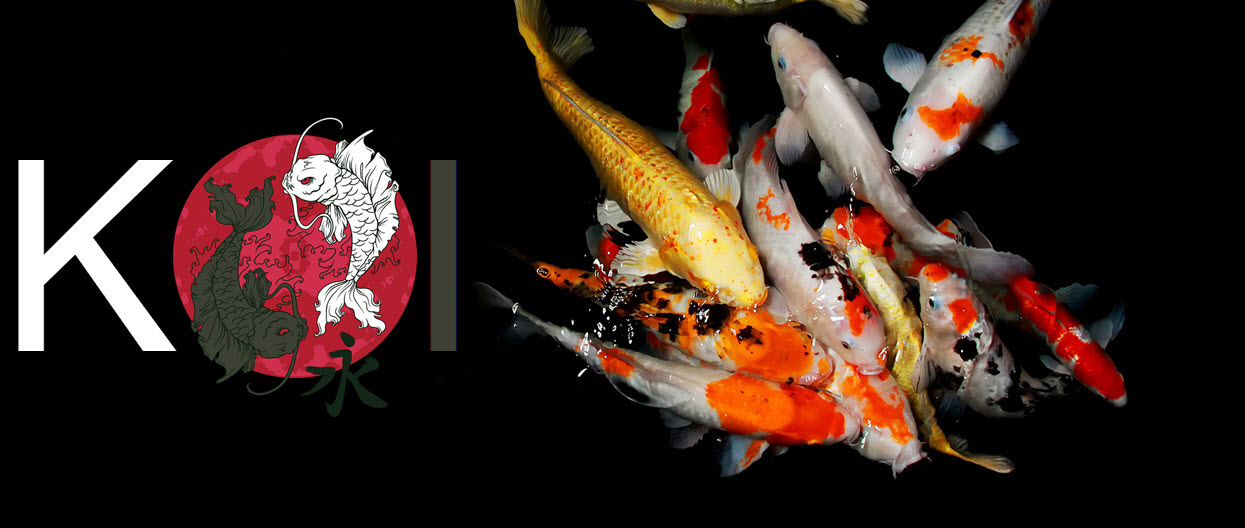Background
In East Asia, several carp species have traditionally been raised in ponds to serve as food fish. Also, some carps likes to live in flooded rice paddies, where the help the farmer by controlling pests. Therefore, there is a long tradition in East Asia of being in contract with living carps and noticing when something is different. Sometimes when a natural colour mutation was spotted, the fish was kept as a pretty ornamental fish.
The oldest preserved Chinese texts mentioning carp of various colours are from the Jin Dysasty (266 to 420 CE). In Japan, the Japanese history book Nihon Shokri (Chronicles of Japan) brings up the subject. According to this book, which was completed in 720 CE, Emperor Keikō saw coloured carp in a pond in the Mino region, and Emperor Suiko encountered coloured carp in the garden of Soga no Umako´s residence.
In China, the tradition of deliberately breeding of carp with unusual colours is more than a thousand years old.
The Amur carp
While the famous Chinese goldfish hails from wild carp of the genus Carassius, the Japanese koi can trace its ancestry back to the Amur carp (Cyprinus rubrofuscus). They are both carps, but belong to different genera (Carassisus vs. Cyprinus).
If you read about koi and koi ancestry in older sources, you might be confused by the wild species mentioned. That is because in the past, the Amur carp (today classified as its own species, Cyprinus rubrofuscus) was considered a subspecies of the Common carp (Cyprinus carpio).
The Amur carp is native to East Asia, where it has been breed for food since at least the fifth century BCE.
Early koi breeding
The earliest surviving records about ornamental Amur carp breeding in Japan is from the 1820s, but it is quite possible that unusually pretty Amur carps were kept as pets even before this.

We know that ornamental Amur carps were bred in Ojiya and Yamakoshi in the 1820s, and today, they are acknowledged as the birthplace of nishikigoi. Both places are located within the Niigata Prefecture, in the north-eastern part of Honshu. The climate there is warm in the summer, but the winters are cold and snowy, so fish kept in ponds must be able to handle that.
Carps with pale blue (Asagi) colouration or red colouration seem to have been the first ones used in deliberate koi breeding programs. Then, the white-red-yellow Bekkou appeared on the scene. The famous Sarasa koi variety, with its distinct red-on-white pattern, is known since around 1830. The yellow-base Ki uturi is a bit younger than Sarasa.
The 1914 exhibition in Tokyo
For a long time, koi keeping and the development of showy varieties was not very well known in the wider segments of the Japanese population, especially not outside the Niigata Prefecture. This changed in 1914, when koi from Niigata was put on display at an annual exposition in Tokyo and garnered a lot of attention there.
The boom in koi keeping also helped to boost the breeders, who eventually came up with new varieties – such as Kōhaku, Taishō Sanshoku and Shōwa Sanshoku.
